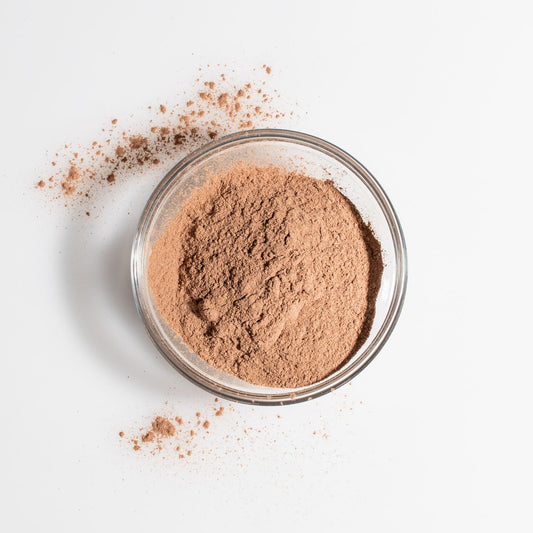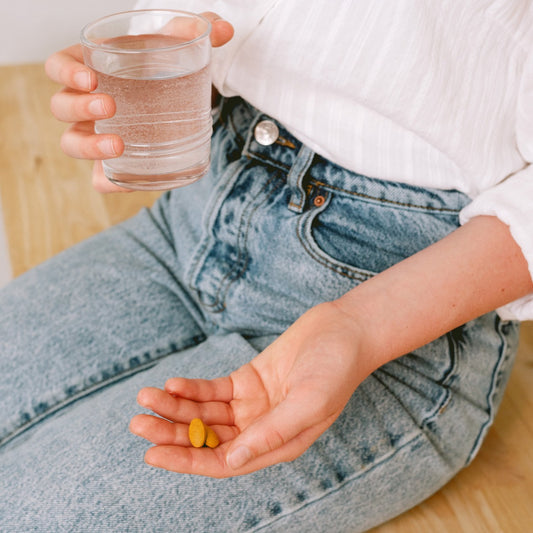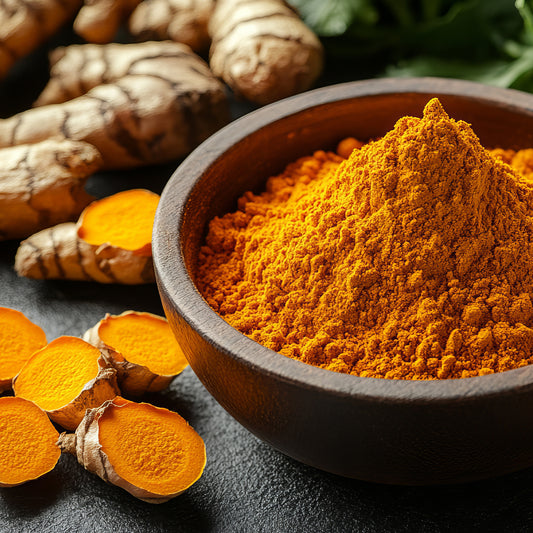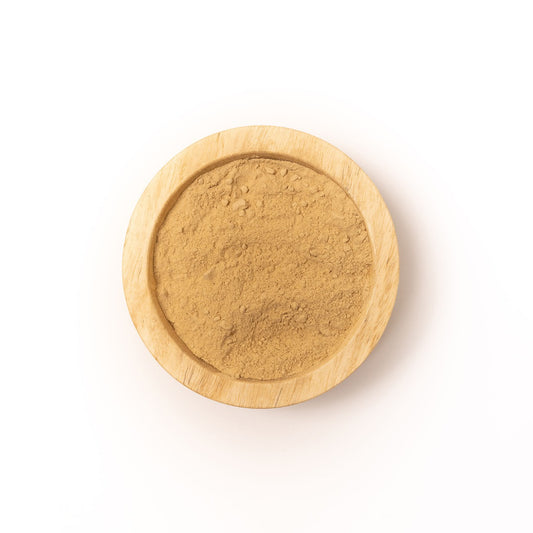Vibrant Heart
An Ayurvedic Guide to Heart Health

We all know that the heart is one of the most vital organs in the body. Just look at the veritable fortress of bone and tissue that surrounds it in the chest cavity.
Given that we cannot survive without a properly functioning heart, this level of physical protection is really no surprise. But physical protection isn't always enough to keep our hearts healthy.
In fact, heart disease is currently the leading cause of death among both men and women in the US, so the heart is certainly an organ deserving of our attention and care. But let's be clear. This guide is not about heart disease; it is about the
Our purpose is to explore a holistic and integrated approach to caring for the heart.
Though we will certainly examine the Ayurvedic perspective on widely accepted preventative tools such as diet and exercise, we will also venture well beyond this familiar territory.
How Ayurveda Sees the Heart
The
Picture a wagon wheel with the heart at the center, each spoke representing a different system, channel, or substance that either originates from, resides within, or passes through the heart. This multi-faceted confluence of
The heart is an important seat (primary location) of
The heart is also deeply integrated with the subtle body, which permeates and informs the physical body, extends beyond the physical form, and is more energetic in nature. As a result, the heart is an important crossroads among pathways through the
Let's begin by taking a closer look at each of the substances and channels that converge in the heart:
The Doshas
Vata, pitta, and kapha are each said to dwell, at least in part, in the heart.1This means that the condition of each of the
The Srotamsi (Bodily Channels)
The ancient texts of Ayurveda describe thirteen internal bodily channels that are present in both men and women. Of those, three are rooted in the heart. This alone is striking because it is relatively rare for the physical location of distinct channels to overlap.
But when we consider that these three channels in particular are among the only ones that permeate the entire physical body, the significance of the heart becomes even more apparent.
In essence, the Ayurvedic texts reveal that the heart is intimately connected to every cell and tissue throughout the body—three different times through three distinct channels. No other organ in the Ayurvedic srotamsi shares that level of integration with the entire body.
Below is a brief description of the three channels that are rooted in the heart:
- Mano vaha
Already, we can begin to appreciate how profoundly our hearts might be affected by our minds, by our overall state of consciousness, by how prana is or is not flowing in our bodies, by the process of tissue nutrition, and in turn, by diet and the strength of
The Ten Great Vessels
The heart is also the root of an important set of subtle energetic pathways described in the Vedic texts—the ten great vessels (which happen to be intimately connected to mano vaha srotas and rasa vaha srotas, above).
Of the ten, three are said to be the most important.2 These three travel from the base of the spine to the crown of the head, intersecting at each of the seven chakras and form an important part of the subtle body. They are:
-
-
-
These three nadis are said to carry the flow of prana, reinforcing the relationship between prana, the subtle body, and the heart.
Interestingly, when we practice

The Heart Chakra
As we have seen, the
This energetic vortex is associated with compassionate love, relational connections, and with caring for others.
It is also the primary emotional center—with a particular affinity for feelings of love, empathy, loneliness, grief, and sadness, which tend to gather around the heart.
By definition, each chakra is a nerve plexus where a number of energetic pathways meet and intersect. While we have already highlighted several such channels, the heart chakra adds to the number of subtle pathways that converge in the heart, and to the influences that affect heart health.
Ojas
The heart is home to the subtlest, most refined and essential form of ojas, the positive subtle essence of strength, vigor, vitality, and immunity. The super-fine form of ojas that resides in the heart is said to sustain the activity of the heart, consciousness, and life itself.4
Ojas is the end product of perfect digestion and tissue nutrition. As such, the quality of ojas is a direct reflection of the strength of agni. But ojas can also be affected by past trauma, lifestyle choices, stress levels, the quality of our relationships, and our overall state of consciousness, so all of these factors become important elements of heart health as well.
As we can see, Ayurveda places the heart in the very center of a complex and intricate web of intersecting physical and energetic pathways. So far, we know the heart to be simultaneously and intimately linked to:
- The three doshas (vata, pitta, and kapha).
- The process of tissue nutrition, diet, and the state of agni (the digestive fire).
- The flow of prana throughout the body.
- Mental health and our overall state of mind.
- Our connection to higher consciousness.
- Emotional health, the emotional body, and in particular, emotions such as love, empathy, grief, and sadness.
- Ojas, the subtle essence of strength and vitality.
The Ayurvedic Approach to Caring for the Heart
Remember that the Ayurvedic tradition views the body, mind, and spirit as inseparable parts of a single, integrated whole. Tending to any one of the above influences can very powerfully affect change in the heart.
Similarly, all of the systems and channels that intersect in the heart are deeply influenced by the health of the heart itself. In other words, treatment strategies that impact any one of these fields will inevitably impact every other, leaving us to choose from a diverse range of possible therapeutic strategies, all of which stand to benefit both the heart and the whole of who we are.
As you review the suggestions below, keep in mind that you can implement one strategy at a time or take on several at once. The most important part of your process may be to listen to your intuition and to follow your heart when deciding on the approach that is right for you.
That said, this information is meant to serve as a general introduction and should in no way replace personalized medical advice. If you currently have a heart condition, please check with your doctor before implementing any new therapeutic strategies.
Subtle Therapies
When it comes to heart health, the ancient texts emphasize the importance of calming the mind, practicing non-violence, maintaining mental health and happiness, conserving vital energy, and controlling the senses.5
As the energetic hub that it is, the heart is deeply affected by just about every aspect of our lives.
Subtle therapies can be a powerful means of positively influencing the mind, the nervous system, and our overall state of consciousness. The following therapeutic strategies support heart health by:
- Reducing stress.
- Supporting mental and emotional well-being.
- Clearing the bodily channels and energetic pathways (srotamsi and nadis).
- Promoting the healthy flow of prana throughout the system.
- Kindling agni.
- Clearing
- Improving tissue nutrition.
- Supporting ojas.
Pranayama
Prana, the vital breath, is the subtle essence of the life force that animates each of us. It infuses every cell and tissue throughout our bodies and is carried on and stimulated by the breath.
Working with the breath through the practice of pranayama is a powerful way to access and reset longstanding patterns in the energetic body. Pranayama restores fluidity and vitality to the subtle energy channels of the body, releases accumulated tension, and offers deep support to the nervous system.
It also kindles agni and helps to digest and eliminate stagnation and ama (toxins). Pranayama more specifically supports heart health by calming and purifying the mind, and by activating many of the subtle channels that are rooted in the heart, including prana vaha srotas, mano vaha srotas, ida nadi, pingala nadi, and sushumna nadi.
If you are new to pranayama, start with Full Yogic Breath to ensure that you are breathing correctly. Ujjayi Pranayama (Breath of Victory) is another introductory practice that will benefit the heart.6
Once you have some comfort with pranayama, Nadi Shodhana (Alternate Nostril Breathing) works more directly with ida and pingala nadis and is a powerful means of clearing accumulated tension relieving stress, preserving vital energy, and supporting an improved mental disposition in the face of everyday stressors.
All three of these practices are generally
If you prefer a guided practice, consider Dr. Claudia Welch's Prana CD, which includes a beautiful, hands-free version of alternate nostril breathing.

Yoga
Yoga positively impacts the heart in very similar ways: it moves prana in the body, helps to dissipate tension, clears stagnation, and encourages fluidity throughout the tissues, the subtle body, and the mental and emotional spheres.
Yoga also stimulates circulation, and serves as a balanced form of exercise, which is an important aspect of heart health.
Unless there is an acute heart condition, Ayurveda recommends six to ten Sun Salutations daily, or you can more specifically support the heart with poses such as Locust, Bridge, Cow Face, Bow, Cobra, Seated Forward Bend, Tree Pose, or a simple ten to fifteen minutes of Savasana daily.7
Meditation or Prayer
The practice of meditation or prayer helps to tap into the subtle channels of the mind and to re-pattern even our most habituated responses to challenging situations.
Mindfulness practices can specifically improve heart health by clearing the channels of the mind, improving mental and emotional health, supporting the flow of prana throughout the system, encouraging the proper digestion of food, thoughts, and emotions, all while balancing the three doshas, and helping to nourish ojas.
If you do not have an established practice, Empty Bowl Meditation is a wonderful place to start.
Stress Management
Excess stress tends to wreak havoc on every aspect of our health—from agni and the quality of digestion, to the nervous system, our thought patterns, and our overall state of mind. Because the heart is so closely linked to so many physical and energetic pathways in the body, it is not difficult to imagine that excess stress might also compromise heart health.
If you struggle with stress, please see our health guide: An Ayurvedic Guide to Stress Management, which examines stress through the lens of Ayurveda and offers a number of practical tips for improving your relationship with challenging situations.
Gold Water
Gold helps to heal and strengthen the heart. The healing qualities of gold can be harnessed by preparing and drinking water infused with the subtle energy of pure gold.
Simply place a pure (ideally, 24 karat) gold item—like a gold band—in 2 cups of water, bring to a boil, and simmer until the water is reduced to 1 cup. Remove the gold item (it will not be damaged at all by this process), cool, and store the gold water. Take 1 teaspoon of this water, two to three times each day.8
Rudraksha Seed
In India, the dried seed from the fruit of the rudraksha tree is highly revered for the support it offers the heart. These seeds are said to support meditation, to open the heart chakra, and to bolster heart health—both physically and spiritually.9
The seeds can be strung to make a necklace and worn near the heart. Or you can infuse water with the seed's subtle energy by soaking it in a glass of water overnight. In the morning, remove the seed and drink the water.10 This process can be repeated daily.
Dietary Strategies
Tending to agni is the number one way to promote optimal health throughout the system. Because it so directly determines the health of the plasma, the bodily tissues, and ojas, agni is critically important when it comes to heart health.
If the concept of agni is new to you, you might appreciate our guide to Understanding Agni. In very general terms, agni is supported by a diet that minimizes stimulants, refined sugars, and processed foods. Instead, emphasize healthy, whole foods, and be attentive to proper food combining.
Agni is also strengthened when we eat with mindfulness, maintain a regular eating schedule (eat our meals at consistent times from one day to the next), and, when necessary, follow a vata pacifying, pitta pacifying, or kapha pacifying diet. If you are not sure of your current state of balance, you can take our dosha quiz to determine if a specific diet would support your agni and encourage a more efficient return to balance.
Remember, eating is a sacred act, an act of love.
It is therefore best to eat in a calm, peaceful environment, free of emotional upset, intense conversation, television, or multi-tasking of any kind.
Ideally, set aside twenty to thirty minutes to stop what you are doing and receive each meal. Envision your digestive fire transforming your food into perfectly refined nutrition, and visualize your circulatory system delivering this vital energy to every cell and tissue throughout your body.
Listen carefully for the subtle signs within that you are satisfied—preferably, completing your meal before you feel full. When you are finished, take a couple of deep, full breaths before moving on to your next activity.
These practices allow your body to fully register the tastes and textures of your food, reduce the likelihood of overeating, encourage an experience of satisfaction, and help to ensure optimal digestive health.
You can further support agni by eating your main meal at lunchtime (ideally between 11 a.m. and 2 p.m.) when the strength of the digestive fire is naturally at its peak.
Beyond these basics, it is important to consume adequate fiber in the form of fresh vegetables, whole grains, and the like. Being mindful of getting an appropriate quantity of quality fats will also support heart health.
Ayurveda recommends different amounts of oil and fat for different individuals, depending on one's constitution and current state of balance.
- Those with kapha-predominant constitutions and imbalances need only a small quantity of fat in the diet because they tend to be naturally oily and well-lubricated.
- Those with vata-predominant constitutions and imbalances tend to be very dry and usually need to ingest generous amounts of high-quality oils and fats to keep their systems properly lubricated.
- Pitta-predominant constitutions and imbalances usually land somewhere in the middle and require moderate amounts of oil and fat.
Again, if you are unsure of your current state of balance, our dosha quiz can give you an idea of which dosha might need the most support at this time.
It is also worth mentioning two foods that are particularly supportive of heart health and that are easily added to any diet: garlic and ginger.11 Both of these foods naturally kindle agni, destroy toxins, support proper circulation, and clear excess kapha, which can clog the bodily channels and negatively impact heart health. You can easily add garlic and ginger to cooked dishes, or consider making a ginger tea simply by boiling a few slices of fresh ginger in water. Ginger tea can be particularly beneficial during the colder seasons.
Appropriate Exercise
Proper exercise supports heart health by releasing accumulated tension, encouraging the flow of prana, moving stagnant mental and emotional energy, and improving circulation throughout the body—in both subtle and gross channels.
Exercise also kindles agni, improves digestion, bolsters the body's detoxification mechanisms, encourages proper elimination, promotes relaxation, and protects ojas, all of which benefit the heart.
However, improper exercise can actually be quite damaging—it can induce stress and compromise our overall health. Ayurveda offers the unique perspective that the type, duration, and intensity of exercise that is most supportive for each of us depends largely on who we are as individuals.
If you do not know much about your personal characteristics, our dosha quiz can help you determine your constitution and your current state of balance. After you know which of your doshas needs the most attention, our Daily Routine Department can guide you in establishing an appropriate exercise regimen.
If you are not currently exercising regularly, remember that a supportive exercise program does not have to be complex or time-intensive. A daily twenty-minute walk can do wonders for the entire system—body, mind, and spirit. Of course, if your preferred exercise routine is longer, that's fine too.
Focus on activities that you find joyful and fulfilling. This will support your heart health both physically and energetically.
How and when you exercise can also impact the efficacy of your exercise program. Ayurveda teaches us that certain times of day are more conducive to exercise than others. These are the kapha times of day (approximately 6 to 10 a.m./p.m.), when atmospheric conditions lend a little extra strength and stamina to the system.
For the best results, plan your activities within this window in either the morning or the evening. Obviously, if those times will not work for you, find one that will; exercise at any time will be better than none at all.
Ayurveda also recommends that we exercise at fifty to seventy percent of our capacity—ideally, breathing through our nostrils the entire time. This prevents physiological stress, and allows the body to benefit more deeply from our efforts. You can apply this approach to walking, hiking, running, cycling, yoga, swimming, as well as cardio workouts at the gym. Please check with your doctor before starting a new exercise program.

Herbal Therapies
Arjunais the foremost
Heart Formula tablets deliver a rejuvenating combination of herbs designed to support the proper function of the heart and the circulatory system and enhance one's sense of well-being. As a cardiac tonic, this formula nourishes the heart muscle while supporting healthy circulation and proper oxygenation throughout the body. Its primary ingredient, arjuna, is complemented by herbs such as hawthorn berry and guggulu that contrubute to the heart-supporting benefits of the formula.
Tulsi, also known as holy basil, is one of the most sacred plants in India and offers a host of physical benefits. It brings warmth and nourishment to the thoracic cavity, including the lungs and heart. Highly
Joyful Heart is an uplifting Ayurvedic tea blend that includes whole flowers, seeds, and herbs for promoting harmony within. Among this tea's heart-warming ingredients are rose petals, chamomile flowers, and hibiscus flowers in a base of cumin, coriander, and fennel seeds.
Trust Your Heart
Because it is such a critically important physical and energetic crossroads in the body, the heart is deeply supported by a diverse range of therapeutic strategies.
Ayurveda teaches us that healthy organs and tissues are the natural outcome of optimal health—which depends on robust agni, a healthy diet, a supportive lifestyle, and a balanced nervous system, as well as mental, emotional, and spiritual well-being.
Supporting the heart is often as much about basic self-care as it is anything else.
Our bodies flourish with proper nutrition, appropriate exercise, and adequate sleep; they do even better when we commit to managing stress, cultivating healthy relationships, embracing joy and meaning, and living in alignment with our own authentic nature.
The above suggestions will undoubtedly support the heart, but it is equally important that you honor yourself and your timing. Ayurveda is a very holistic and individualized wellness tradition; it is all about you—your unique strengths and vulnerabilities, and your personal path toward healing.
With this in mind, take your time, follow your inspiration, approach change one manageable step at a time, and celebrate the milestones along the way. We hope that we can continue to support you on your path toward robust health, immense joy, and a vibrant heart—whatever that looks like for you.
About the Author
Melody Mischke, AP
Melody Mischke is a certified Transformational Coach, Ayurvedic Practitioner, Yoga Teacher, Writer, and Intuitive. She began studying meditation in India at 18, and has...
More for You
How to Improve Digestion
Gain a deeper understanding and appreciation of the role digestion (agni) plays in your overall health, and learn practical tools to keep your digestion strong.
References
1 Welch, Claudia. The Secrets of the Mind: The Ten Channels Revealed. Big Shakti, 2005. eBook. 23.
2 Shiva Svarodaya. Trans. Ram Kumar Rai. Varanasi: Prachya Prakashan, 1997. Print. 9. Shiva Svarodaya: 36.
3 Welch, Claudia. The Secrets of the Mind: The Ten Channels Revealed. Big Shakti, 2005. eBook. 24.
4 Lad, Vasant. Textbook of Ayurveda Volume I: Fundamental Principles of Ayurveda. Albuquerque: The Ayurvedic Press, 2002. Print. 212-117.
5 Charaka. Charaka Samhita, Volume I. Trans. Dr. Ram Karan Sharma and Vaidya Bhagwan Dash. Varanasi: Chowkhamba Sanskrit Series Office, 2009. Print. 596. Charaka Samhita: Sutrasthana: XXX: 13-15.
6 Lad, Vasant. The Complete Book of Ayurvedic Home Remedies. New York: Three Rivers Press, 1998. Print. 198.
7 Lad, Vasant. The Complete Book of Ayurvedic Home Remedies. New York: Three Rivers Press, 1998. Print. 196-197.
8 Lad, Vasant. The Complete Book of Ayurvedic Home Remedies. New York: Three Rivers Press, 1998. Print. 196, 276.
9 Lad, Vasant. The Complete Book of Ayurvedic Home Remedies. New York: Three Rivers Press, 1998. Print. 197.
10 Lad, Vasant. The Complete Book of Ayurvedic Home Remedies. New York: Three Rivers Press, 1998. Print. 197.
11 Lad, Vasant. The Complete Book of Ayurvedic Home Remedies. New York: Three Rivers Press, 1998. Print. 196-197.
12 Lad, Vasant. The Complete Book of Ayurvedic Home Remedies. New York: Three Rivers Press, 1998. Print. 196.












